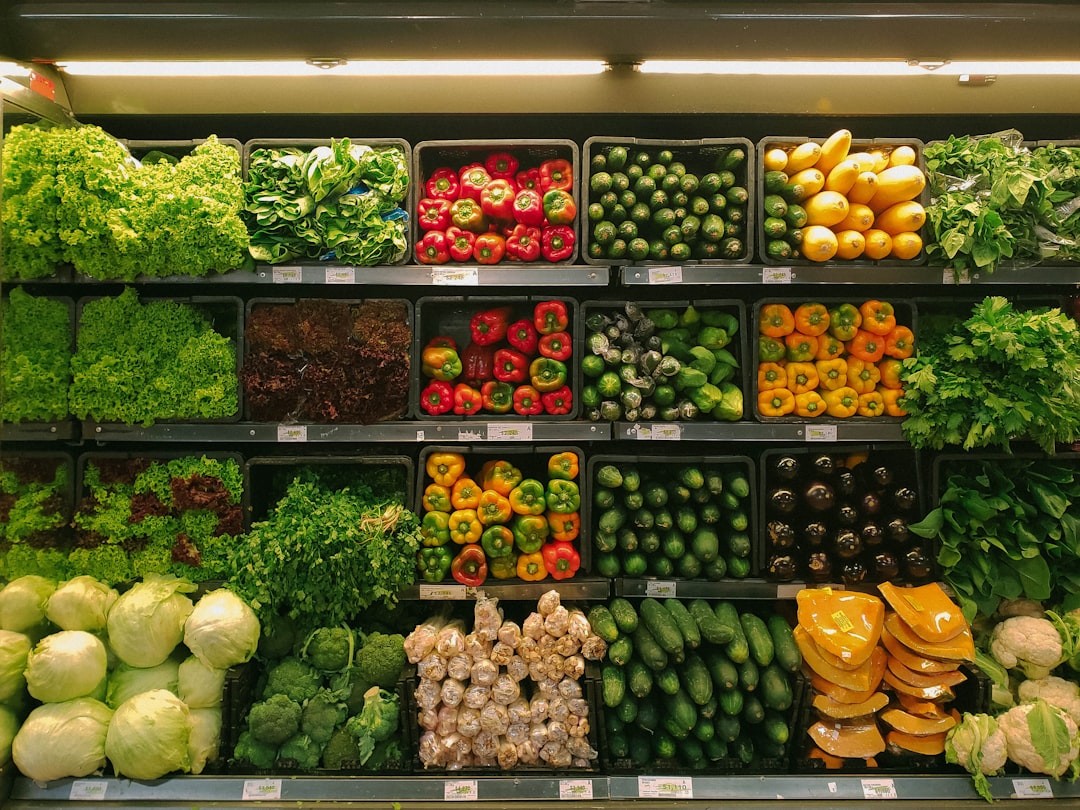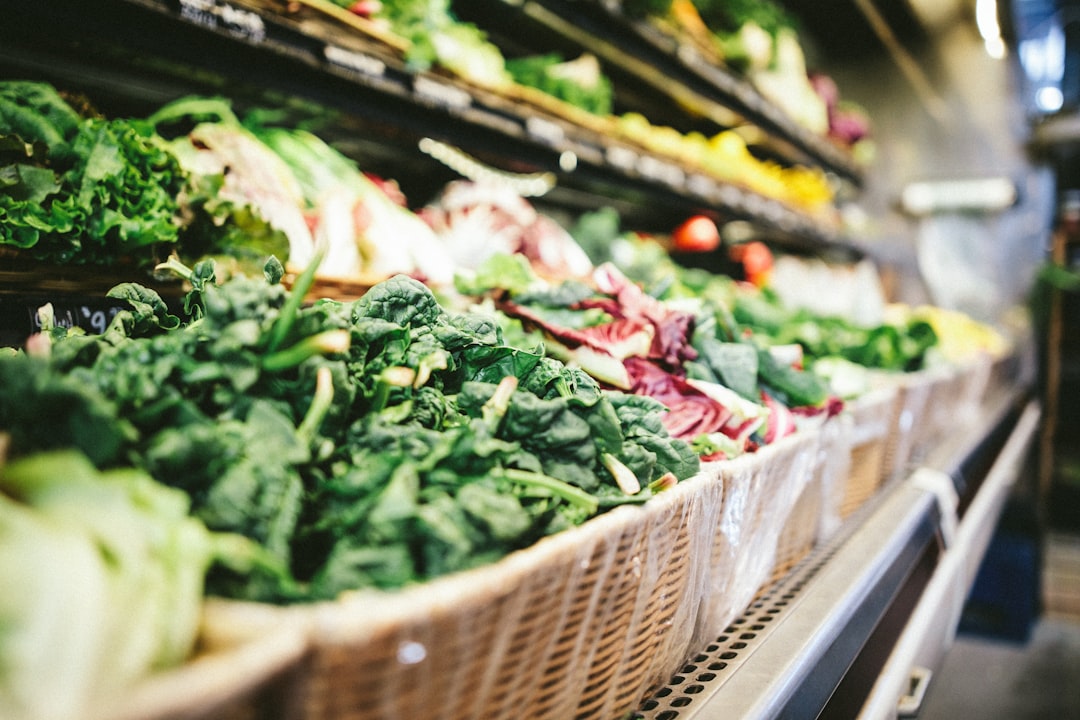Saving money on groceries is an important aspect of managing your finances. With the cost of living on the rise, it’s becoming increasingly difficult to make ends meet. However, there are simple and effective ways to save money on groceries without sacrificing quality or nutrition. In this blog post, we will explore 5 simple ways to save money on groceries that you can start implementing today.
The Importance of Saving Money on Groceries
Groceries are a significant expense for most households, and it’s an area where you can easily overspend. According to the Bureau of Labor Statistics, the average American household spends around $4,643 on food annually. That’s a significant amount of money that can be put towards other expenses or savings. By saving money on groceries, you can reduce your overall expenses and free up cash for other important things.
Simple Ways to Save Money on Groceries
Saving money on groceries doesn’t have to be complicated. With a few simple changes to your shopping and meal planning habits, you can significantly reduce your grocery bill. In the following sections, we will discuss five simple ways to save money on groceries.
Plan Your Meals
Meal planning is a powerful tool for saving money on groceries. By planning your meals in advance, you can avoid buying unnecessary items and reduce food waste. Additionally, meal planning allows you to make the most of your ingredients and leftovers. You can plan for multiple meals with similar ingredients, which can save you money in the long run.
To effectively plan your meals, start by creating a list of your favorite meals and their ingredients. Then, check your pantry and fridge to see what you already have on hand. From there, you can create a shopping list for the items you need. By sticking to your list, you can avoid impulse buys and save money.
Shop with a List
Shopping with a list is another simple way to save money on groceries. When you shop without a list, you’re more likely to buy items that you don’t need or forget essential items. By creating a comprehensive grocery list, you can ensure that you only buy what you need.
To create a comprehensive grocery list, start by planning your meals for the week. Then, check your pantry and fridge to see what you already have on hand. From there, create a list of the items you need for your meals and any other essential items. By sticking to your list, you can avoid impulse buys and save money.
Buy in Bulk
Buying in bulk can be an effective way to save money on groceries in the long run. When you buy in bulk, you can often get a lower price per unit, which can add up to significant savings over time. Additionally, buying in bulk can reduce the amount of packaging waste that you generate.
Some items that are good to buy in bulk include grains, nuts, and dried fruit. These items have a long shelf life and can be stored easily. However, it’s important to only buy what you know you’ll use to avoid waste.
Use Coupons and Loyalty Programs
Using coupons and loyalty programs can be an effective way to save money on groceries. Many stores offer coupons and loyalty programs that can help you save money on your purchases. Additionally, you can often find coupons online or in-store flyers.
To find coupons, start by checking the store’s website or app. Many stores have digital coupons that you can load onto your loyalty card. Additionally, you can check online coupon sites for printable coupons. Finally, check your local newspaper or in-store flyers for coupons.
Shop Seasonally and Locally
Shopping seasonally and locally can be an effective way to save money on groceries. When you shop seasonally, you can take advantage of lower prices for in-season produce. Additionally, shopping locally can reduce the cost of transportation and support local farmers.
To find local produce, start by checking your local farmer’s market. Additionally, many grocery stores now carry locally sourced produce. Finally, consider joining a community-supported agriculture (CSA) program, which allows you to receive a weekly box of fresh produce directly from a local farm.
Conclusion
In conclusion, there are five simple ways to save money on groceries: plan your meals, shop with a list, buy in bulk, use coupons and loyalty programs, and shop seasonally and locally. By implementing these tips, you can significantly reduce your grocery bill without sacrificing quality or nutrition. We encourage you to try these tips and see how much you can save on your grocery bills.
Plan Your Meals
Meal planning is an essential step in saving money on groceries. By planning your meals ahead of time, you can avoid impulse buys and make the most of the ingredients you have on hand. Here are some tips for effective meal planning:
- Use leftovers: Don’t let leftovers go to waste. Plan to use them in future meals by incorporating them into new dishes or repurposing them as snacks.
- Plan for multiple meals with similar ingredients: If you’re making a dish that requires a specific ingredient, plan to use that ingredient in other meals throughout the week. For example, if you’re making a stir-fry with bell peppers, plan to use the remaining bell peppers in a salad or omelet later in the week.
- Make a schedule: Set aside time each week to plan your meals. This will help you stay organized and ensure that you have all the ingredients you need on hand.
- Consider your schedule: If you know you’ll be busy on certain days, plan to make meals that are quick and easy to prepare. This will help you avoid the temptation to order takeout or eat out.
- Try new recipes: Experiment with new recipes to keep things interesting. Look for recipes that use ingredients you already have on hand to save money.
By following these tips, you can save money on groceries while still enjoying delicious and nutritious meals. Plus, meal planning can help you reduce food waste and make the most of your time in the kitchen.
This will help you stay organized and ensure that you have all the ingredients you need on hand.
Shop with a List
When it comes to grocery shopping, one of the most effective ways to save money is to shop with a list. Not only does this prevent impulse purchases, but it also ensures that you only buy what you actually need. Here are some tips for creating a comprehensive grocery list:
- Check your pantry and fridge before heading to the store. This will help you avoid buying duplicates of items you already have.
- Plan your meals for the week and make a list of the ingredients you need for each meal.
- Include staples that you use regularly, such as milk, eggs, and bread.
- Consider any upcoming events or special occasions that may require additional items, such as birthday parties or holiday dinners.
- Organize your list by category, such as produce, dairy, and meat, to make it easier to navigate the store.
By shopping with a list, you can save both time and money. Not only will you be less likely to make impulse purchases, but you’ll also be able to take advantage of sales and discounts on items that you actually need. Plus, having a list can help you stay on track and avoid overspending.
Not only will you be less likely to make impulse purchases, but you’ll also be able to take advantage of sales and discounts on items that you actually need.
Buy in Bulk to Save Money on Groceries
When it comes to saving money on groceries, buying in bulk is a strategy that can pay off in the long run. By purchasing larger quantities of items you use frequently, you can often get a lower price per unit and reduce the number of trips you need to make to the store. Plus, buying in bulk can help reduce packaging waste, which is good for the environment.
There are a variety of items that are good to buy in bulk, such as grains, nuts, and dried fruit. These items have a long shelf life and can be stored easily in a pantry or other dry storage area. You can also buy non-perishable items like toilet paper, cleaning supplies, and pet food in bulk to save money.
When buying in bulk, it’s important to consider how much you can realistically use before the item goes bad. For example, buying a giant bag of spinach might seem like a good deal, but if you can’t use it all before it goes bad, you’re not really saving money. Be realistic about your consumption habits and only buy in bulk what you know you’ll use.
Another important factor to consider when buying in bulk is storage. Make sure you have enough space to store your bulk purchases before you buy them. If you don’t have a lot of storage space, consider splitting bulk purchases with a friend or family member.
One great way to buy in bulk is to shop at warehouse stores like Costco or Sam’s Club. These stores are known for their large quantities and low prices. However, keep in mind that you’ll need to pay a membership fee to shop at these stores, so make sure you’ll be able to save enough money to make the fee worth it.
Buying in bulk can be a great way to save money on groceries, but it’s important to do so thoughtfully. By considering your consumption habits, storage space, and the cost per unit, you can make smart bulk purchases that will help you save money in the long run.
Make sure you have enough space to store your bulk purchases before you buy them.
Use Coupons and Loyalty Programs
When it comes to saving money on groceries, using coupons and loyalty programs can be a game-changer. These programs are designed to reward customers for their loyalty and incentivize them to keep coming back. By taking advantage of these programs, you can save a significant amount of money on your grocery bills.
One of the benefits of using coupons is that they can be found in a variety of places. Online coupon sites like Coupons.com and RetailMeNot offer a wide range of coupons for groceries and other household items. You can also find coupons in-store flyers, newspapers, and magazines. By taking a few minutes to search for coupons before heading to the store, you can save a significant amount of money on your grocery bill.
Loyalty programs are another great way to save money on groceries. These programs are typically offered by grocery stores and provide customers with rewards for their loyalty. Rewards can include discounts on groceries, free products, and even cashback. To take advantage of these programs, you typically need to sign up and provide your contact information. Once you’re enrolled, you can start earning rewards every time you shop.
When it comes to finding coupons and loyalty programs, it’s important to do your research. Some stores offer better rewards than others, so it’s important to compare programs before signing up. Additionally, some stores may offer exclusive coupons or discounts to their loyalty program members, so it’s important to check your email and mailbox regularly for these offers.
Using coupons and loyalty programs is a simple and effective way to save money on groceries. By taking advantage of these programs, you can enjoy significant savings on your grocery bills without sacrificing quality or nutrition. So next time you’re planning your grocery trip, be sure to check for coupons and sign up for any loyalty programs that may be available. Your wallet (and your taste buds) will thank you!
You can also find coupons in-store flyers, newspapers, and magazines.
Shop Seasonally and Locally
When it comes to saving money on groceries, shopping seasonally and locally can be a great strategy. Not only does it allow you to support local farmers and businesses, but it can also help you save money on produce that is in season and abundant. Here are some tips for shopping seasonally and locally:
1. Visit farmers markets: Farmers markets are a great place to find fresh, local produce at a reasonable price. You can often find a variety of fruits and vegetables that are in season and grown locally.
2. Join a CSA: Community Supported Agriculture (CSA) programs allow you to purchase a share of a local farm’s harvest. This means you will receive a weekly or bi-weekly box of produce that is in season and grown locally.
3. Check the labels: When shopping at grocery stores, look for produce that is labeled as being from your state or region. This often indicates that it was grown locally and may be cheaper than produce that was shipped from farther away.
4. Buy in bulk: If you find a local farm or farmers market that offers bulk produce, consider purchasing it. You can often get a discount for buying in bulk, and then freeze or preserve the excess for later use.
5. Know what’s in season: Familiarize yourself with what produce is in season in your area. This can help you plan meals and make informed purchases.
By shopping seasonally and locally, you can save money on produce while also supporting your local community. Give it a try and see how much you can save on your grocery bill.
Buy in bulk: If you find a local farm or farmers market that offers bulk produce, consider purchasing it.
Conclusion
After discussing the 6 simple ways to save money on groceries, it is clear that there are numerous strategies that can be implemented to reduce grocery bills without sacrificing quality or nutrition. By planning meals, shopping with a list, buying in bulk, using coupons and loyalty programs, and shopping seasonally and locally, individuals can significantly reduce their grocery expenses over time.
Meal planning is an effective way to save money because it allows individuals to plan for multiple meals with similar ingredients and use leftovers in creative ways. Shopping with a list is also crucial because it helps individuals avoid impulse purchases and ensures that they are only buying what they need. Buying in bulk is another great way to save money in the long run, especially for items like grains, nuts, and dried fruit. Coupons and loyalty programs can also provide significant savings, and individuals should make an effort to find and use them whenever possible. Finally, shopping seasonally and locally can also help individuals save money, as local produce is often less expensive and more readily available during certain times of the year.
Overall, the key to saving money on groceries is to be intentional and strategic with your shopping and meal planning habits. By implementing these 5 simple strategies, individuals can significantly reduce their grocery bills over time and enjoy the benefits of a healthier and more cost-effective lifestyle. So, go ahead and try these tips and see how much you can save on your grocery bills!





